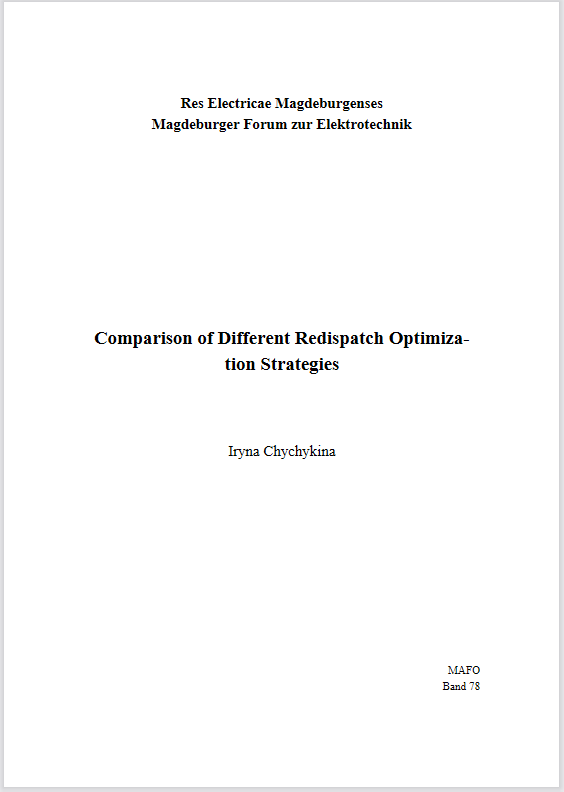Comparison of different redispatch optimization strategies
DOI:
https://doi.org/10.24352/UB.OVGU-2021-073Keywords:
ElektrotechnikAbstract
In the recent years, line congestions in the electric transmission networks occur quite fre-quently due to the power grids were not originally designed for the current amount of energy and its strong fluctuation. Furthermore, the increasing utilization of renewable distributed energy sources, growth of the network complexity, reduction of the conven-tional power plant utilization, forecast errors and strong electricity market competition frequently bring the power grids to their transmission limits as well. Therefore, the risk of congestions has permanently increased, especially in central Europe. If a line congestion occurs in the electric network, the transmission system operator has to apply a suitable remedial action to overcome the problem as fast as possible, e.g by utilization of redispatch, which is very common in Germany. However, this measure can cause high costs for the transmission network operators. For this reason, the realization of an economically efficient and optimal redispatching has become very important issue in the power system operation. The main goal of this work is a consideration and development of various possibilities and methods for realization of a technically sound and cost-efficient redispatch in case of network congestions. Therefore, different numerical and metaheuristic optimization tech-niques are implemented, compared with respect to their complexity, efficiency, reliabil-ity, simulation time etc. and verified through a small test grid and simplified ENTSO-E network model. Furthermore, it is shown which technical and economic aspects of redispatching have a major influence on its realization and should always be taken into account or can be ne-glected while solving the redispatch optimization problem. Here, different approaches of the network sensitivity analysis are evaluated and compared as well. Finally, the transmission network operators can use the knowledge and results of this work to improve the current redispatch realization in their power grids, and thus to reduce the redispatch costs, which are especially high in Germany.
Downloads
Published
Issue
Section
License
Copyright (c) 2019 Res Electricae Magdeburgenses. Magdeburger Forum zur Elektrotechnik

This work is licensed under a Creative Commons Attribution-ShareAlike 4.0 International License.

